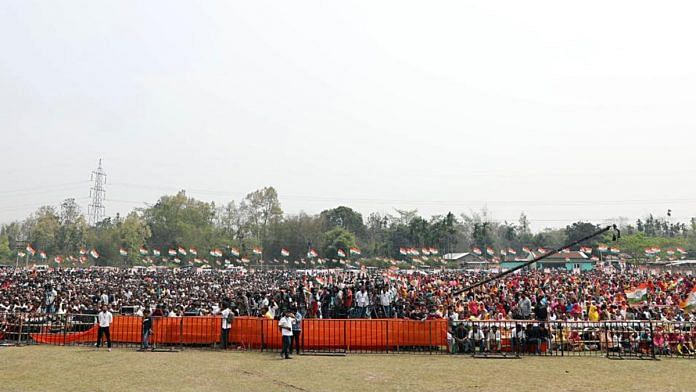New Delhi: As India is overwhelmed by the Covid-19 second wave and states that have just elected new (or old) governments to power are among the worst-hit, data shows that the numbers surged significantly in a fortnight from the polling days in all states.
What’s more, India’s apparent denial of the prospect of a second wave also meant that Holi 2021 had none of the restraint of Holi 2020 when a Twitter appeal from Prime Minister Narendra Modi had ensured that India observed a hunkered-down Holi.
The result: A 152 per cent jump in the number of active cases between 29 March, the day of Holi, and 13 April.
A fortnight accounts for the average lag of about 15 days between diagnosis and death for a Covid-19 patient in India.
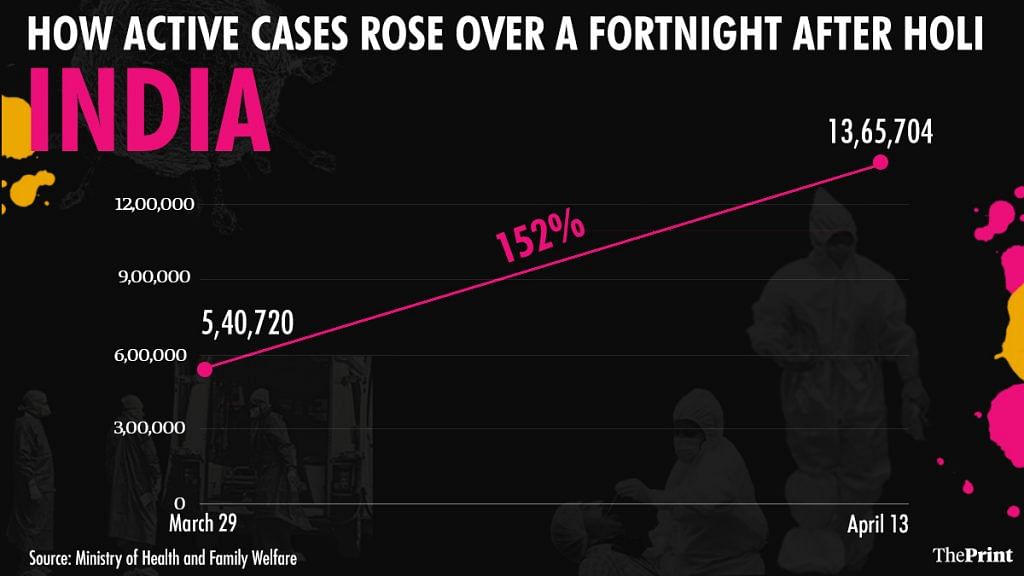
Also read: India’s Covid crisis shows lack of foresight, complacency, says Raghuram Rajan
Massive jump during elections
But whether it be a religious festival or one of democracy, the onslaught of the SARS-CoV2 virus has been relentless.
Active cases in Kerala rose by 349 per cent from 30,228 on 6 April — the day of the single-phase assembly elections — to 1,35,910 on 21 April. Tamil Nadu, which voted on the same day as its neighbour, saw a 229 per cent jump over the same period to 84,361 cases.
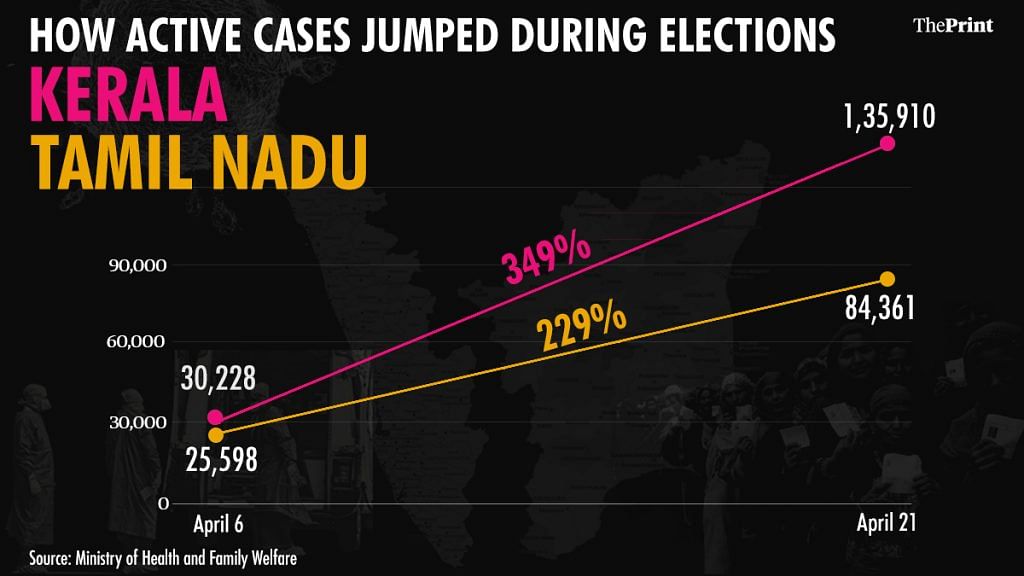
In tiny Puducherry, the active cases shot up by 204 per cent to 5,404 cases during this same interval.
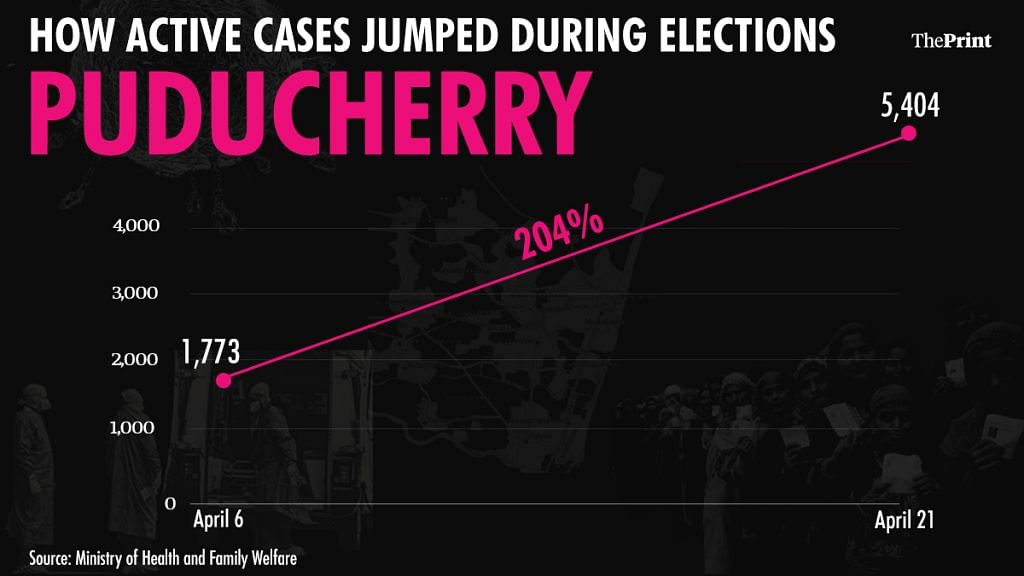
Assam voted in three phases — on 27 March, 1 April and 6 April. Obviously in states with multi-phased elections, electioneering continued in other parts of the state even when one part had voted or was in the 48-hour no-campaign period.
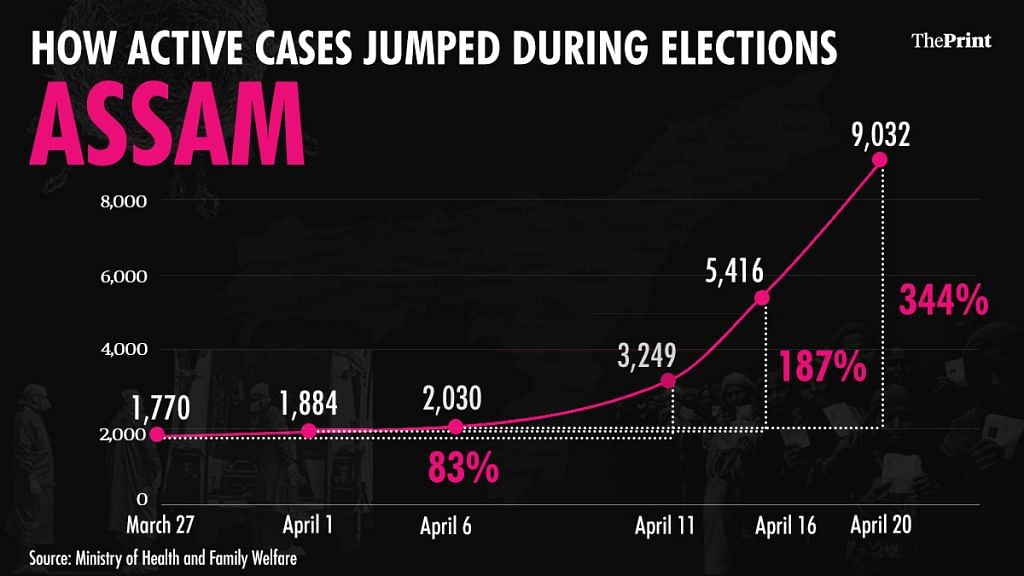
Active cases in Assam went up by 83 per cent from 27 March to 11 April, by 187 per cent from 1 April to 16 April and by 344 per cent between 6 April and 20 April.
This came in a state where the most important minister, Health and Finance Minister Himanta Biswa Sarma had declared that there is no need for masks because Assam is free from Covid.
The picture is similar in bitterly fought West Bengal, where the full brunt of the last three phases of the eight-phase elections will become clear only in the coming days.
Between 27 March and 11 April, active cases in Bengal went up more than four times from 4,608 to 23,981 — a jump of 420 per cent. Between 1 April (second phase) and 16 April, cases went up almost seven times from 6,513 to 41,047 — a jump of 530 per cent.
Between the third phase on 6 April and a fortnight later on 20 April, cases went up almost five times from 12,775 to 58,386. That was a jump of 357 per cent. The fourth phase of elections happened on 10 April. By 25 April the active cases went up by 315 per cent from 21,366 to 88,800 — another four-fold jump.
On 17 April, when the fifth phase of polling happened, active cases in West Bengal stood at 45,300. On 2 May, it went up to 1,18,945, in a 162 per cent jump.
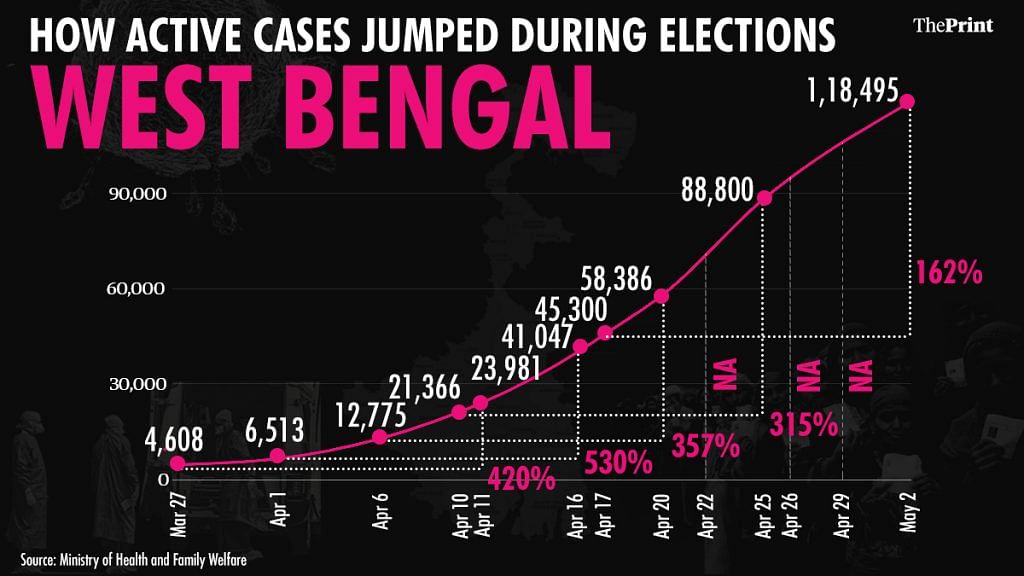
The rising Covid numbers have caused alarm bells across the country. An irate Madras HC last month said that the Election Commission of India had been “irresponsible” and should “face murder charges”.
Also read: Delhi hospital study finds just 16% vaccinated individuals got Covid, experts say nothing serious
‘Elections may have affected Covid management’
While the link between super-spreader events and a surge in Covid-19 numbers has been established time and again throughout the world, experts also point out that in a poll-bound state, there is also the contingency that the government machinery is too caught up in the election process to do Covid management with all its might.
“Any super-spreader event will facilitate spread. Holi or election, most people do not follow distancing and masking and this may have led to higher transmission. However you also have to consider the possibility that after elections there may have been a surge in testing,” said said Dr Giridhara Babu, professor and head, lifecourse epidemiology, Public Health Foundation of India.
“During elections sometimes it happens that the amount of time you have to review the programme is reduced, Covid takes a backseat once the main focus elections. Health workers may have been on election duty too, that would have caused some amount of lack of focus on Covid response during the elections,” said Babu.
He added that there is a need to compare the surge in these states or in others and link mass congregations to Covid numbers to better understand the genesis and nature of the Covid-19 second wave in India.
(Edited by Amit Upadhyaya)
Also read: DU loses nearly 15 teachers & staff to Covid, writes to Modi govt to set up care facility


